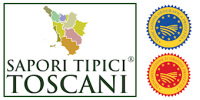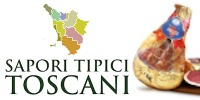Our network:
Saturday 21 December 2024
Church of San Francesco
The Arch of San Francesco opens onto the square also named after the saint, onto which faces the Basilica of San Francesco. Although the first Franciscan influences in Siena date back to the beginning of the 13th century, this church was not built until between the 14th and 15th century. The gothic design is probably by Francesco di Giorgio. Almost completely ravaged by fire in 1655, the church of San Francesco was restored by Giuseppe Partini between 1885 and 1892. The facade was rebuilt between 1894 and 1913 to designs by Vittorio Mariani and Gaetano Ceccarelli, while the elegant bell tower was erected in 1765 to a design by Paolo Posi.
The spacious interior, which was restored in its original gothic style in 1892, is Egyptian cross in layout, with a single nave and chapels in the transept. The portal framed ceiling is supported by alternating strips of black and white stone lateral walls, lit by large bifore windows and an apsidal quadrifore window typical of the simple architecture of the Franciscans in the 14th century.
The lateral walls are adorned with early Quattrocento Senese School fresco decorations of exceptional quality. At the end of the right hand transept there is a 14th century statue of St Francis. The interior facade is decorated with two frescoes, one by Sodoma and the other by Sassetta.
The second chapel to the right of the Choir contains the Tomb of Cristoforo Felici, completed by Urbano da Cortona in 1462, while the first chapel contains a Madonna and Child polyptych fresco, possibly by Andrea Vanni.
The first chapel to the left of the presbytery contains Pietro Lorenzetti’s fresco of the Crucifixion, painted in 1331. The second chapel in the left hand section of the transept contains a further two masterpieces by Ambrogio Lorenzetti, two frescoes depicting St Ludovico of Anjou Before Boniface VIII and the Six Franciscans Martyred at Ceuta.
Opposite is the Chapel of the Sacrament, decorated by Marrina in 1502. A door to the left leads to the spacious and delicately proportioned Renaissance cloister, which contains a number of sculpture fragments such as the Portale della Cappella Petroni (1336) attributed to Domenico D’Agostino. The right hand door leads to the Seminary, where the chapel on the floor above contains the well known Madonna del Latte by Ambrogio Lorenzetti as well as a polyptych fresco by Lippo Vanni.
Today the Franciscan convent to the right of the church and the Renaissance cloister are occupied by the Law Faculty and Department Library of the University of Siena.
The spacious interior, which was restored in its original gothic style in 1892, is Egyptian cross in layout, with a single nave and chapels in the transept. The portal framed ceiling is supported by alternating strips of black and white stone lateral walls, lit by large bifore windows and an apsidal quadrifore window typical of the simple architecture of the Franciscans in the 14th century.
The lateral walls are adorned with early Quattrocento Senese School fresco decorations of exceptional quality. At the end of the right hand transept there is a 14th century statue of St Francis. The interior facade is decorated with two frescoes, one by Sodoma and the other by Sassetta.
The second chapel to the right of the Choir contains the Tomb of Cristoforo Felici, completed by Urbano da Cortona in 1462, while the first chapel contains a Madonna and Child polyptych fresco, possibly by Andrea Vanni.
The first chapel to the left of the presbytery contains Pietro Lorenzetti’s fresco of the Crucifixion, painted in 1331. The second chapel in the left hand section of the transept contains a further two masterpieces by Ambrogio Lorenzetti, two frescoes depicting St Ludovico of Anjou Before Boniface VIII and the Six Franciscans Martyred at Ceuta.
Opposite is the Chapel of the Sacrament, decorated by Marrina in 1502. A door to the left leads to the spacious and delicately proportioned Renaissance cloister, which contains a number of sculpture fragments such as the Portale della Cappella Petroni (1336) attributed to Domenico D’Agostino. The right hand door leads to the Seminary, where the chapel on the floor above contains the well known Madonna del Latte by Ambrogio Lorenzetti as well as a polyptych fresco by Lippo Vanni.
Today the Franciscan convent to the right of the church and the Renaissance cloister are occupied by the Law Faculty and Department Library of the University of Siena.
Booking.com
• Siena in the Renaissance
• Siena in the Middle Ages
• Siena in Antiquity
• Town Map Siena
• Farm Holidays and Country Houses
• Residence, Apartments
• Bed & Breakfasts
• Historical Residences
• Last Minute Siena
• Restaurants
• Pubs & Wine Bar
• University for Foreigners
• Palazzo Chigi-Saracini
• Palazzo d’Elci degli Alessi
• Loggia della Mercanzia
• Palazzo Sansedoni
• Palazzo Chigi-Zondadari
• Fonte Gaia fountain
• Carthusian Monastery of Pontignano
• Forte di Santa Barbara
• The Duomo – The Cathedral of the Assunta
• Church of the Osservanza
• The Oratory of San Bernardino
• Church of San Francesco
• Short Biography of St Catherine of Siena
• St Catherine Sanctuary
• Church of S. Niccolò al Carmine
• Bologna-Buonsignori museum
• Accademia dei Fisiocritici
• I Musei Senesi
• The Palazzo Pubblico and the Torre del Mangia
• Piazza del Campo
• The Montagnola Senese and the Fortified Village of Sovicille
• The Castles of Belcaro and Quattro Torri
General information
• Town map • Siena in the Renaissance
• Siena in the Middle Ages
• Siena in Antiquity
Transport in town
• Map of Hotels in Siena • Town Map Siena
Transport out of town
• Train services
Where to Stay
• Hotels • Farm Holidays and Country Houses
• Residence, Apartments
• Bed & Breakfasts
• Historical Residences
OFFERS & LAST MINUTE
• Reservation Services Siena • Last Minute Siena
Where to eat and drink
• Disco Dancing • Restaurants
• Pubs & Wine Bar
Education
• Siena University • University for Foreigners
Art and monuments
• Palazzo Piccolomini and Palazzo delle Papesse • Palazzo Chigi-Saracini
• Palazzo d’Elci degli Alessi
• Loggia della Mercanzia
• Palazzo Sansedoni
• Palazzo Chigi-Zondadari
• Fonte Gaia fountain
• Carthusian Monastery of Pontignano
• Forte di Santa Barbara
Art and religion
• Church of Sant’Agostino • The Duomo – The Cathedral of the Assunta
• Church of the Osservanza
• The Oratory of San Bernardino
• Church of San Francesco
• Short Biography of St Catherine of Siena
• St Catherine Sanctuary
• Church of S. Niccolò al Carmine
Museums and galleries
• The Museo Civico • Bologna-Buonsignori museum
• Accademia dei Fisiocritici
• I Musei Senesi
Art and tourist attractions
• Cappella di Piazza • The Palazzo Pubblico and the Torre del Mangia
• Piazza del Campo
• The Montagnola Senese and the Fortified Village of Sovicille
• The Castles of Belcaro and Quattro Torri
Booking.com
• The July and August Palio
• The Contrade
• The Days of the Palio
• The Drappellone
• The Eve of the Palio
• The Corteo Storico Procession
• The Race
• The Patron Saint and Oratory of Each Contrada
• Weekly Appointments in each Contrada from April onwards
• Croce del Travaglio Place
• From Piazza del Campo to the Duomo Along Via di Città
• The Curves of Piazza del Campo
• Costarella dei Barbieri street
• Borgo d’Ovile
• The Terzo of Camollia – main streets
• Casato di Sopra e Casato di Sotto
• Terzo di San Martino district
• The Terzo di Città District - Via Stalloreggi, Via San Quirico
• The Terzo di Città District – The Pinacoteca Nazionale
• Golf courses in Siena and Tuscany
• Wedding in Tuscany - Siena area
• San Casciano dei Bagni
• Chianciano Terme
• Bagni San Filippo
• Bagno Vignoni
• Rapolano Terme - Baths of San Giovanni and Baths of the Antica Querciolaia
• The Countryside around Siena and its Thermal Water Springs
• SkiPass Monte Amiata
• WebCam sul Monte Amiata
• Meteo Monte Amiata
• The Val d’Orcia and Its Main Towns
• Pienza - the old town centre
• Montepulciano - the old town centre
• San Quirico d’Orcia - the old town centre
• Montalcino and the Land of Brunello
• The Abbey of Monte Oliveto Maggiore and the Crete
• The Crete Senesi
• Castellina in Chianti and the Via Chiantigiana Towards Siena
• Siena and Southern Chianti - from the Castle of Montalto to the Castle of Brolio and on to the Castle of Meleto
• The Chianti Hills - Monte Calvo, Monte Luco and Monte San Michele
• Cortona and the Valdichiana
• San Gimignano - The old town centre and its major sights
• The Val d’Elsa - Monteriggioni and Colle di Val d’Elsa
• Along the Old Via Francigena
• Oleum Evo online selling
• Sapori Tipici Italiani buy online now
• il Prosciutto Cotto
The Palio of Siena
• The Origins • The July and August Palio
• The Contrade
• The Days of the Palio
• The Drappellone
• The Eve of the Palio
• The Corteo Storico Procession
• The Race
• The Patron Saint and Oratory of Each Contrada
• Weekly Appointments in each Contrada from April onwards
Sightseeing
• Via di Città (formerly Via Galgaria), Siena’s Most Elegant Street • Croce del Travaglio Place
• From Piazza del Campo to the Duomo Along Via di Città
• The Curves of Piazza del Campo
• Costarella dei Barbieri street
• Borgo d’Ovile
• The Terzo of Camollia – main streets
• Casato di Sopra e Casato di Sotto
• Terzo di San Martino district
• The Terzo di Città District - Via Stalloreggi, Via San Quirico
• The Terzo di Città District – The Pinacoteca Nazionale
What to see & do
• Wedding in Siena • Golf courses in Siena and Tuscany
• Wedding in Tuscany - Siena area
• San Casciano dei Bagni
• Chianciano Terme
• Bagni San Filippo
• Bagno Vignoni
• Rapolano Terme - Baths of San Giovanni and Baths of the Antica Querciolaia
• The Countryside around Siena and its Thermal Water Springs
Monte Amiata
• Monte Amiata - nature tourism the year round • SkiPass Monte Amiata
• WebCam sul Monte Amiata
• Meteo Monte Amiata
Specials - Out of town
• Gift Ideas for traveling • The Val d’Orcia and Its Main Towns
• Pienza - the old town centre
• Montepulciano - the old town centre
• San Quirico d’Orcia - the old town centre
• Montalcino and the Land of Brunello
• The Abbey of Monte Oliveto Maggiore and the Crete
• The Crete Senesi
• Castellina in Chianti and the Via Chiantigiana Towards Siena
• Siena and Southern Chianti - from the Castle of Montalto to the Castle of Brolio and on to the Castle of Meleto
• The Chianti Hills - Monte Calvo, Monte Luco and Monte San Michele
• Cortona and the Valdichiana
• San Gimignano - The old town centre and its major sights
• The Val d’Elsa - Monteriggioni and Colle di Val d’Elsa
• Along the Old Via Francigena
Typical products
• Typical Tuscan flavours • Oleum Evo online selling
• Sapori Tipici Italiani buy online now
• il Prosciutto Cotto









